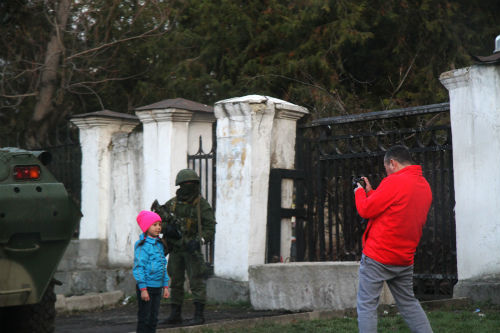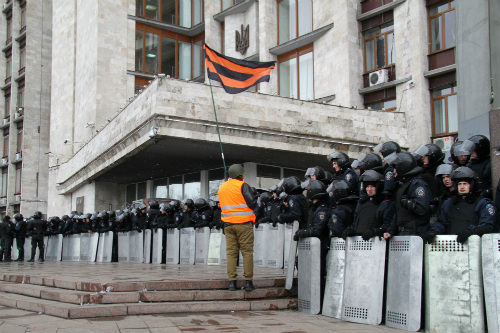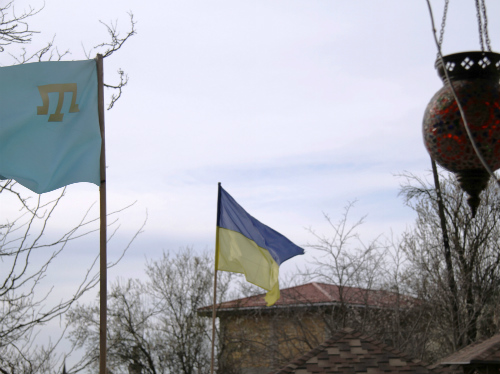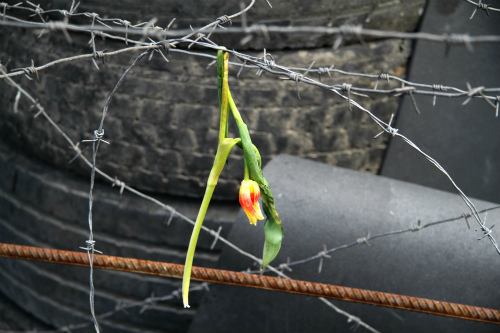
M
en in blank uniforms, their faces in masks, patrol Simferopol, the capital city of the Crimean peninsula. They are Russian, that’s something everyone on the streets already knows. All at once they were around. Blackwater types, except not. Specters with silencers topping their rifles. They fire bullets into the air, sometimes, towards no one, and keep themselves busy. The soldiers make the city tense but only to those that see it that way. Most of the time they are easy to avoid, the soldiers. Escalation doesn’t help anyone. And then there are the vehicles with heavy armor and fat antennas that circle quietly. They don’t bother anyone. They block things we can’t see. Signals and links from shadowy places. Same with the dishes on the ships by Sevastopol, the port city to the south. People say one of these jammers took down a drone the other day, scrambled the connection, just cut the cord like the string to a kite. No one has seen it though and no one wants to say it was theirs, the drone. So it just sort of vanished, if it really existed to begin with. Generators have sprung up mysteriously, overnight in fact, and now people say there is Russian electricity and water in Crimea—complicated necessities that appeared as if by magic. Some protest but most don’t. The soldiers are here to stay. They have become fixtures like statues in the squares. It seems like their presence might be fleeting, so fathers photograph their children next to the men in masks.

Donetsk. March 17, 2014
Today Ukraine became a little bit smaller than it was the day before. Yesterday the people voted. Nearly everyone supported the secession and the Russian Federation, once again, controls the Crimean Peninsula. Crimea, a place that has changed hands for centuries, has now changed hands once more. In the city of Donetsk, just north of the demarcation, pro-Russian demonstrations are a fact of life. Civilians and police fight daily to swap their enemy’s flag with their own. These are the tiny land grabs, building-to-building, fist-to-fist, which spur the momentum of a larger fight. The city, a heavily urbanized industrial hub of about one million, is the tinderbox that may ignite a larger fire. But today it is snowing and a bone-chilling standoff is taking place. A Russian supporter waves the orange and black flag of St. George, a vestige of valor from older Soviet plights. Behind him, a new addition. The Cossacks, Eastern Slavs found in both countries, have turned up en mass. For now, the Cossacks support the Russian cause, but tomorrow may be a different story. Each Cossack community decides their own alliances, but more and more they seem to rally behind Russian nationalism. In front of him, the Ukrainian police. Beaten-down by constant clashes on a local level and disoriented by overthrow at a higher one, the Ukrainian police stand tiredly in front of barbed wire, behind steel shields. They defend their city’s parliament, its brutalist architecture a remnant of the time when these two sides were united.

Bakhchysary, March 16, 2014
Most have gone underground. In the town of Bakhchysary, amidst stone houses now annexed by Russia, the Ukrainian and Tatar flags fly together. These days both are a rarity. After the occupation of the peninsula, many Tatars are hesitant to stand out. This Muslim minority fears a backlash is coming. The children stay home from school and Tatar civilians keep watch over their community at night. Disquiet pervades. Relocation is an option. It’s an option for both the Tatars on the peninsula to flee and for Muslims outside to join. Fight or flight. The community is at an impasse. Is it better to forgive and forget? Or begrudge and remember? At stake is a history that predates all else, a fragment of Ottomanalia on the verge of being lost. The Tatars are indigenous to these parts. It has been their land since the beginning, since the first mosque on Crimea was erected in the 14th century, but perhaps not for much longer. Collectively they withheld their votes on the referendum, the Tatars. Their concerns weren’t voiced on the ballot. No opposition, for that matter, was voiced on the ballot. It was all a quick and clean sham. The Tatars know what purge feels like. And they know what it feels like to be duped as well. Their ancestors were purged during the Second World War. Soviet hands, killers masked as liberators. Stalin expelled the Nazis from Crimea. He freed the Tatars from Hitler, and then shipped them to camps far away from the peninsula, their homeland. People say old habits die hard, that history repeats itself. For the Tatars, relocation is always an option. But in this case, maybe not. Tatar patrolmen walk with flashlights and clubs, protecting their humble city at night from a much bigger force at large.

Kiev. March 20, 2014
What started in winter ended in spring. At Maidan Nezalezhnosti, the central square of Kiev, protesters built barricades. They made Molotovs and fueled fires. They fought in snow against bent metal and burnt rubber. They ousted their president, toppled their government, and performed to the world. Here in Maidan, the memories remain, trading snow for flowers now—the ice already thawed. Here, the stories of soldiers are streamlined. What was once bleak and grey with wreckage is now radiant and painted with hope. There is a microphone in Maidan that anyone can use, to tell their story to those that will listen. It’s a plea. A call for a leader. In the beginning, since the early winter, there were large lines to use it. Everyone wanted a chance to be heard. Until people stopped listening. Sometimes there is too much noise if everyone talks at once. Now the microphone lays quietly next to browning flowers.
